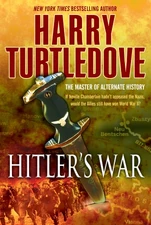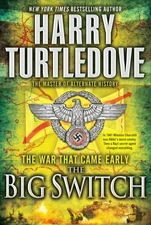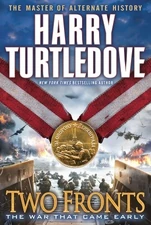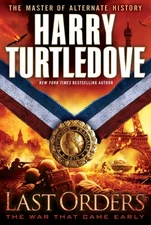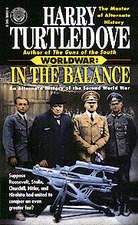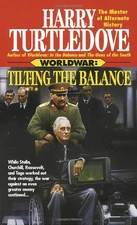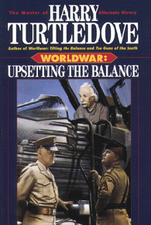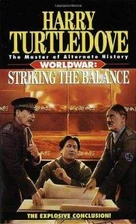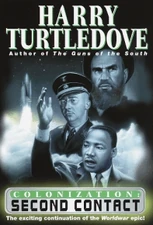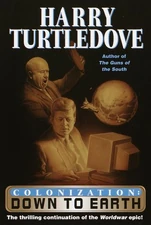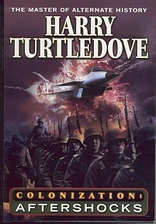No edit summary Tag: Source edit |
ML4E (Message Wall | contribs) No edit summary Tag: Source edit |
||
| Line 5: | Line 5: | ||
After the war, biplanes continued to make up the front line fighters of all major air forces until the late 1930s with the introduction of newer and faster monoplanes. However, the [[Confederate States (Southern Victory)|Confederate States]] continued to use biplanes such as [[Boll Weevil (airplane)|Boll Weevils]] on secondary fronts during the [[Second Great War]]. |
After the war, biplanes continued to make up the front line fighters of all major air forces until the late 1930s with the introduction of newer and faster monoplanes. However, the [[Confederate States (Southern Victory)|Confederate States]] continued to use biplanes such as [[Boll Weevil (airplane)|Boll Weevils]] on secondary fronts during the [[Second Great War]]. |
||
| + | |||
| + | In the 1930s, biplanes continued to be used in civilian tasks such as crop-dusting. However, insurgents such as the [[Mormon (Southern Victory)|Mormons]] during the [[Utah Troubles#Second Great War|Second Great War uprising]] could and did repurpose such aeroplanes for war. They successfully attacked a [[United States Army (Southern Victory)|U.S. Army]] camp outside [[Woodside (Southern Victory)|Woodside]], [[Utah (Southern Victory)|Utah]] by dropping a crate of explosives from a biplane.<ref>''[[Return Engagement]]'', pgs. 288-290, hc.</ref> |
||
==Biplane in [[The War That Came Early]]== |
==Biplane in [[The War That Came Early]]== |
||
| Line 10: | Line 12: | ||
== Biplane in [[Worldwar]] == |
== Biplane in [[Worldwar]] == |
||
| − | Although the '''biplane''' was outdated by 1942, the [[Soviet Air Force (Worldwar)|Soviet Air Force's]] desperate situation forced them to utilize biplanes. [[Ludmila Gorbunova]] of the Red Air Force flew a [[Polikarpov U-2 (Worldwar)|Kukuruznik-model plane]] at the beginning of 1942, and continued to use it effectively after [[the Race]]'s [[Conquest Fleet]] [[Race Invasion of Tosev 3|invaded]] [[ |
+ | Although the '''biplane''' was outdated by 1942, the [[Soviet Air Force (Worldwar)|Soviet Air Force's]] desperate situation forced them to utilize biplanes. [[Ludmila Gorbunova]] of the Red Air Force flew a [[Polikarpov U-2 (Worldwar)|Kukuruznik-model plane]] at the beginning of 1942, and continued to use it effectively after [[the Race]]'s [[Conquest Fleet]] [[Race Invasion of Tosev 3|invaded]] [[Earth (Worldwar)|Earth]]. Generally, the Race saw little to worry about in the small, underpowered plane. Indeed, the [[Soviet Union (Worldwar)|Soviet]] authorities decided that Gorbunova's plane was so safe from attack that they ordered her to carry Foreign Commissar [[Vyacheslav Molotov (Worldwar)|Vyacheslav Molotov]] to a diplomatic meeting in [[Germany (Worldwar)|Germany]] in 1942. |
Ludmila's plane was an agricultural aircraft equipped with machine guns and a five-cylinder radial engine. |
Ludmila's plane was an agricultural aircraft equipped with machine guns and a five-cylinder radial engine. |
||
| + | ==References== |
||
| + | {{Reflist}} |
||
{{Southern Victory}} |
{{Southern Victory}} |
||
{{The War That Came Early}} |
{{The War That Came Early}} |
||
Latest revision as of 18:43, 23 November 2021
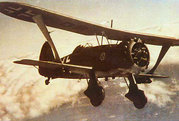
The biplane is a fixed-wing aircraft with two main wings. The biplane was the standard design for most aircraft in the early years of aviation, and became the main vehicle for the various air forces in World War I. While a biplane wing structure has a structural advantage, it produces more drag than a similar monoplane wing. Improved structural techniques and materials and the need for greater speed made the biplane configuration obsolete for most purposes by the late 1930s.
Biplane in Southern Victory[]
When the Great War began, biplanes were the standard air craft of the day. In the early months of the war, they were used for reconnaissance, but quickly turned to combat roles to assist the army in their attacks and defense.
After the war, biplanes continued to make up the front line fighters of all major air forces until the late 1930s with the introduction of newer and faster monoplanes. However, the Confederate States continued to use biplanes such as Boll Weevils on secondary fronts during the Second Great War.
In the 1930s, biplanes continued to be used in civilian tasks such as crop-dusting. However, insurgents such as the Mormons during the Second Great War uprising could and did repurpose such aeroplanes for war. They successfully attacked a U.S. Army camp outside Woodside, Utah by dropping a crate of explosives from a biplane.[1]
Biplane in The War That Came Early[]
When the Second World War broke out in October, 1938, many European nations still had biplanes as their front line fighters. These were hopelessly outmatched by the newer monoplane fighters like the German 109, but they still proved deadly as CAS interceptors and operating in CAS rolls.
Biplane in Worldwar[]
Although the biplane was outdated by 1942, the Soviet Air Force's desperate situation forced them to utilize biplanes. Ludmila Gorbunova of the Red Air Force flew a Kukuruznik-model plane at the beginning of 1942, and continued to use it effectively after the Race's Conquest Fleet invaded Earth. Generally, the Race saw little to worry about in the small, underpowered plane. Indeed, the Soviet authorities decided that Gorbunova's plane was so safe from attack that they ordered her to carry Foreign Commissar Vyacheslav Molotov to a diplomatic meeting in Germany in 1942.
Ludmila's plane was an agricultural aircraft equipped with machine guns and a five-cylinder radial engine.
References[]
- ↑ Return Engagement, pgs. 288-290, hc.
| ||||||||||||||||||||||
| |||||||||||||||||||||||||











